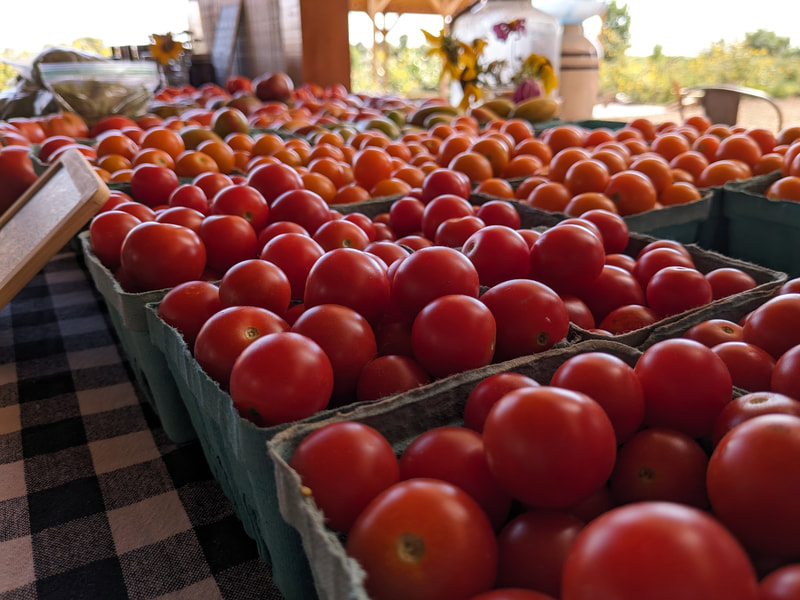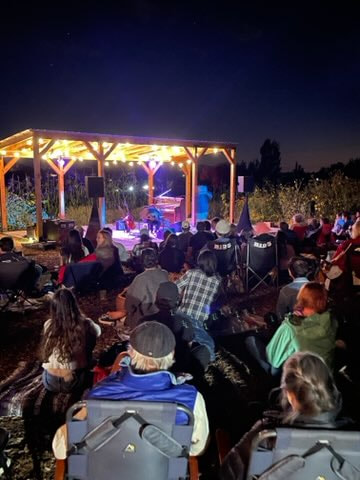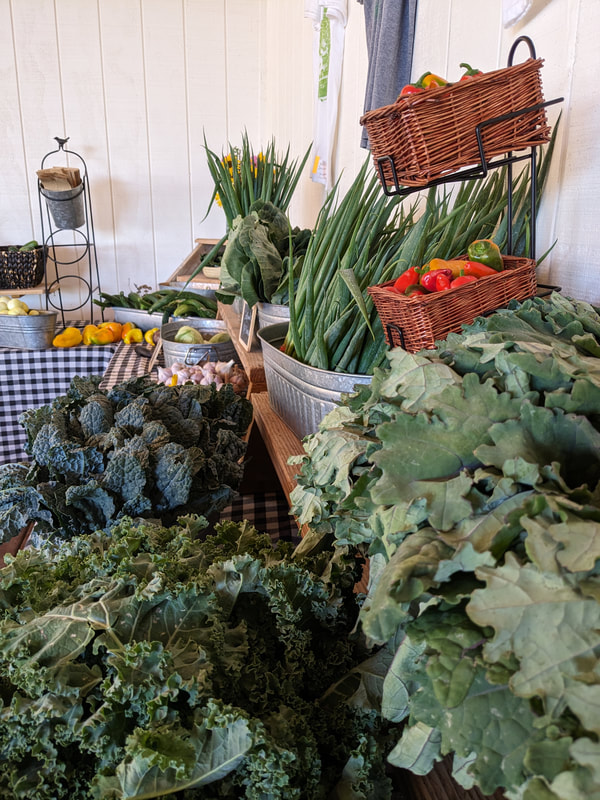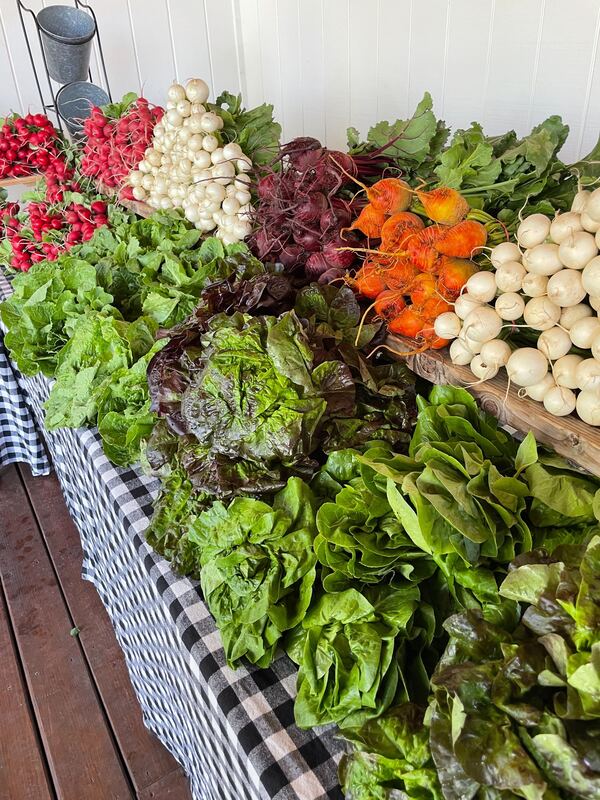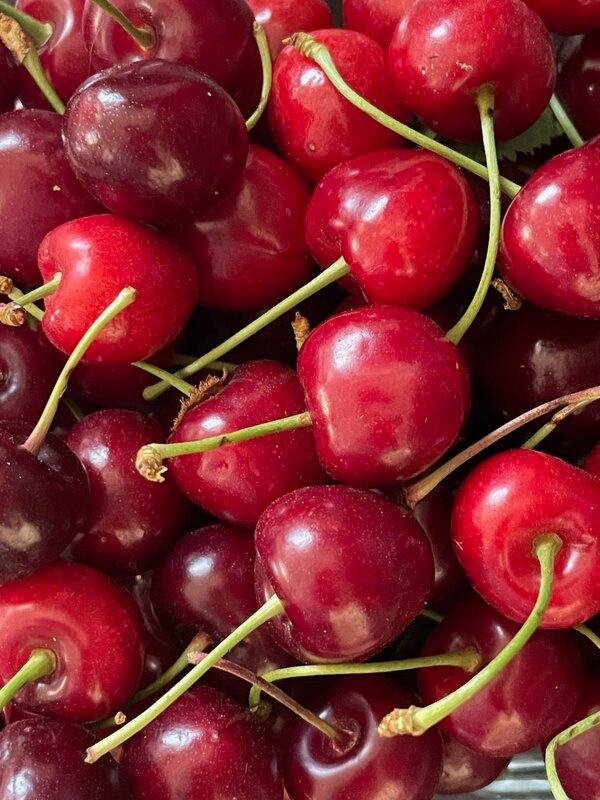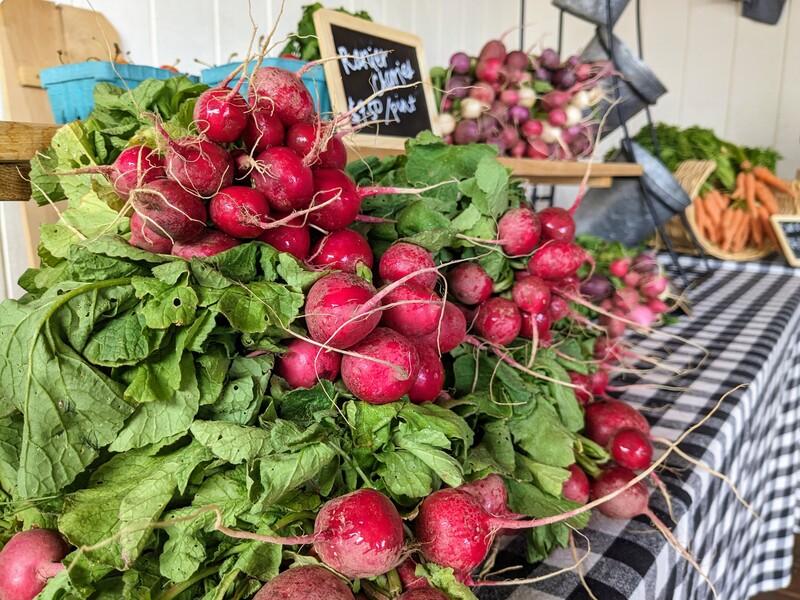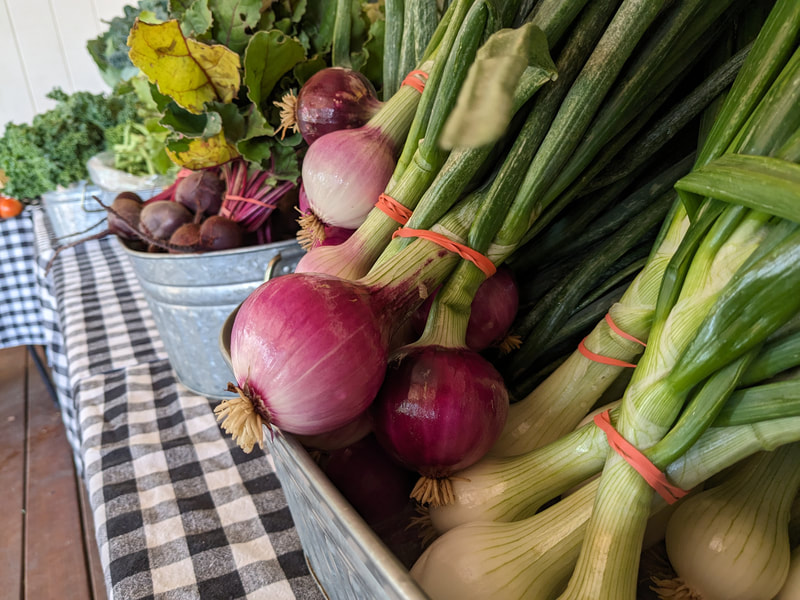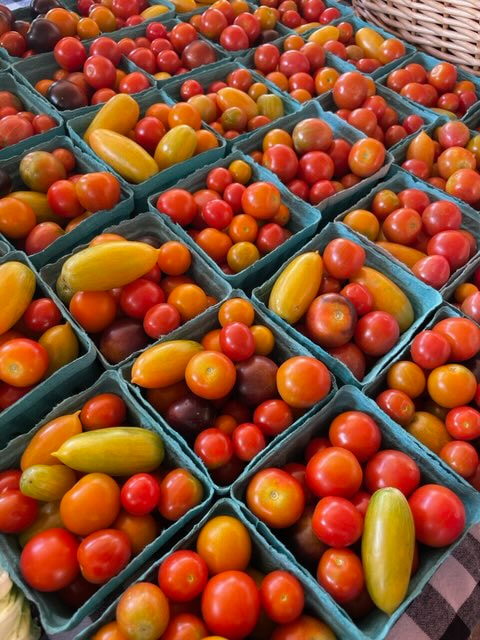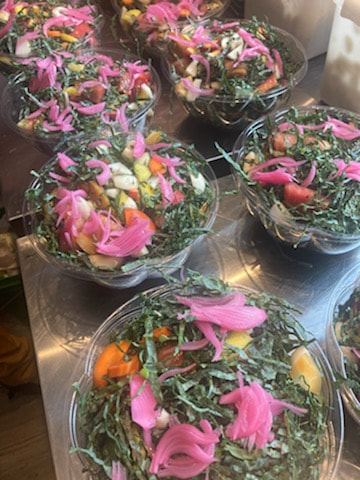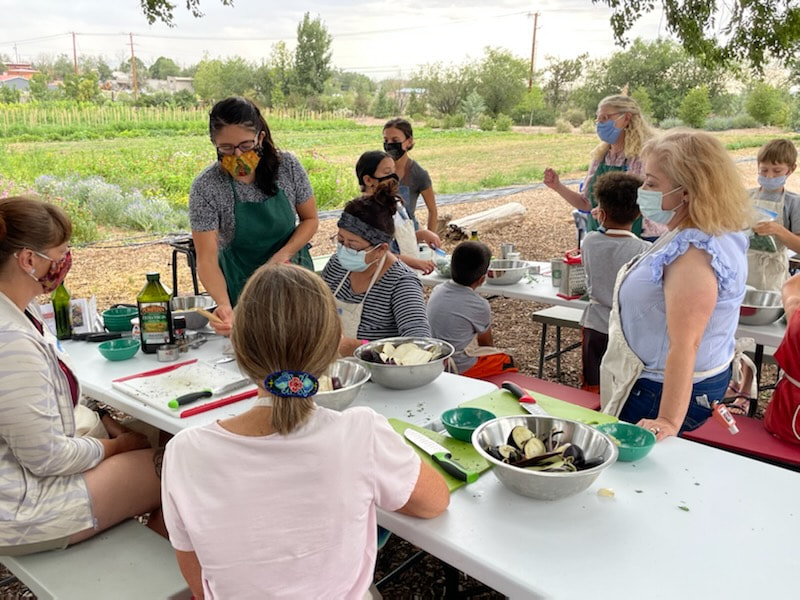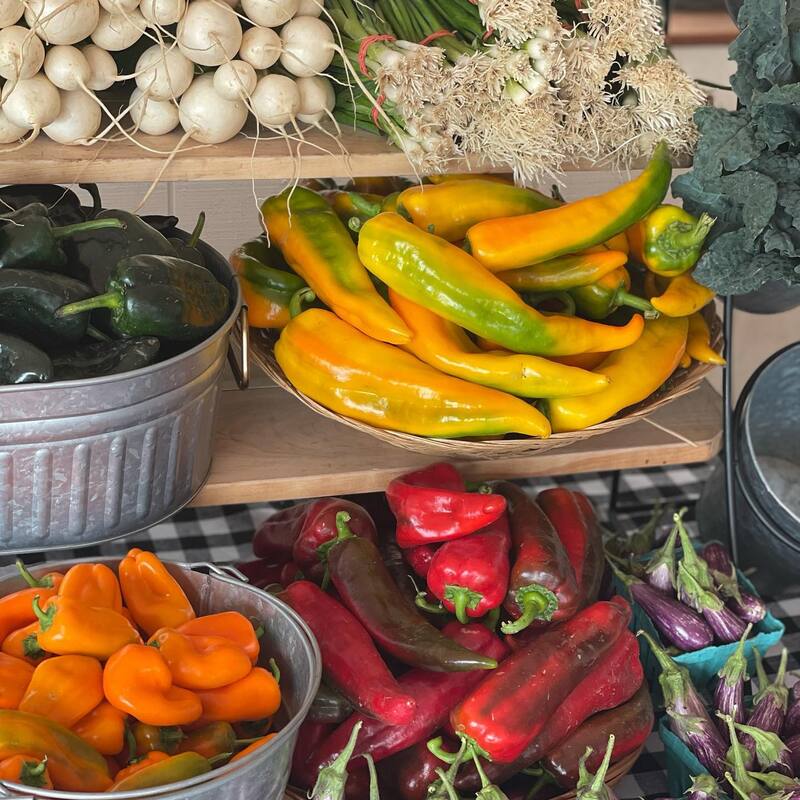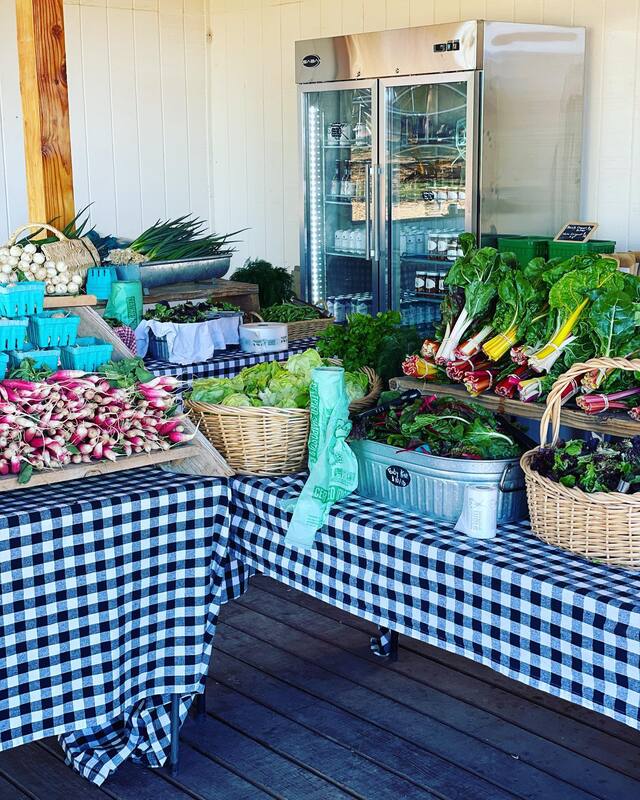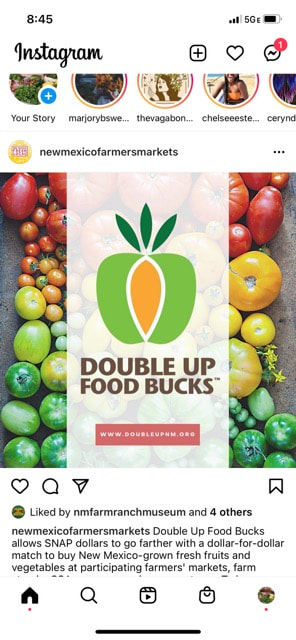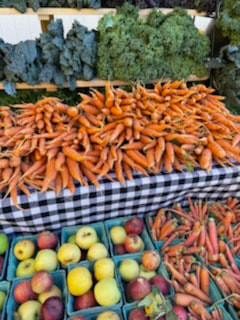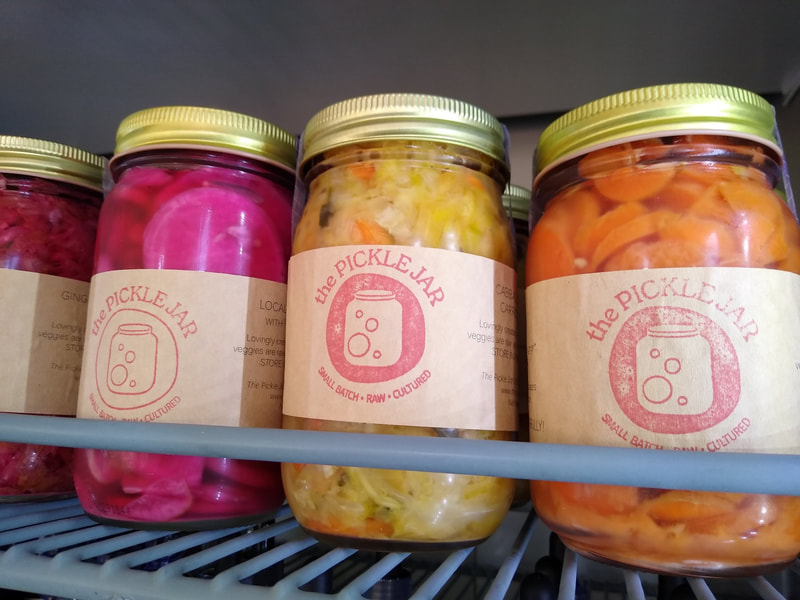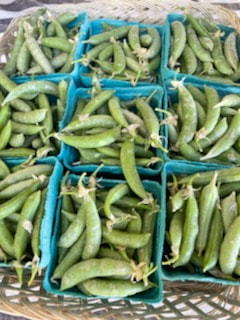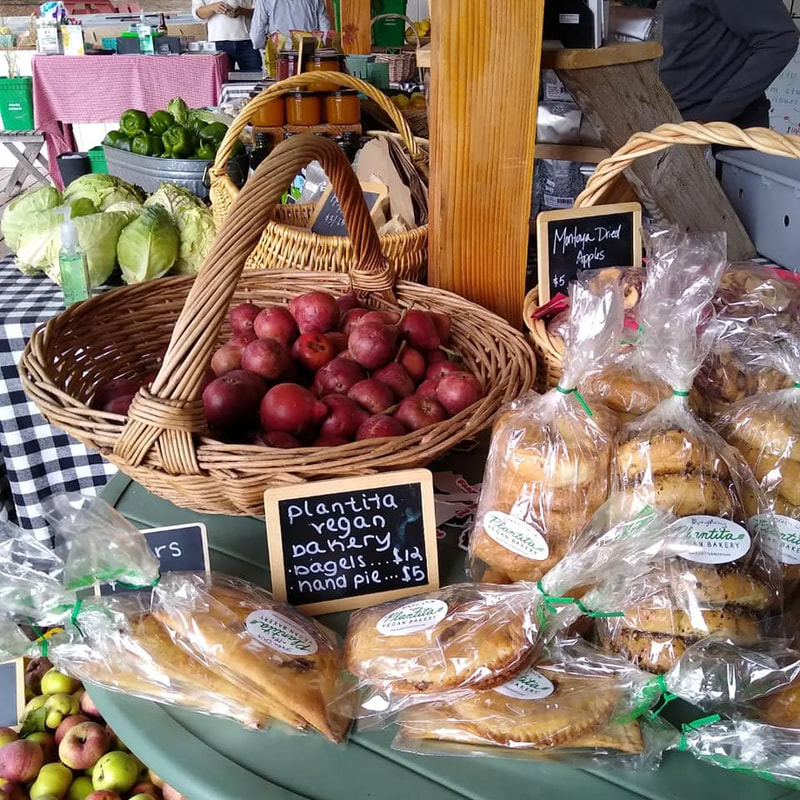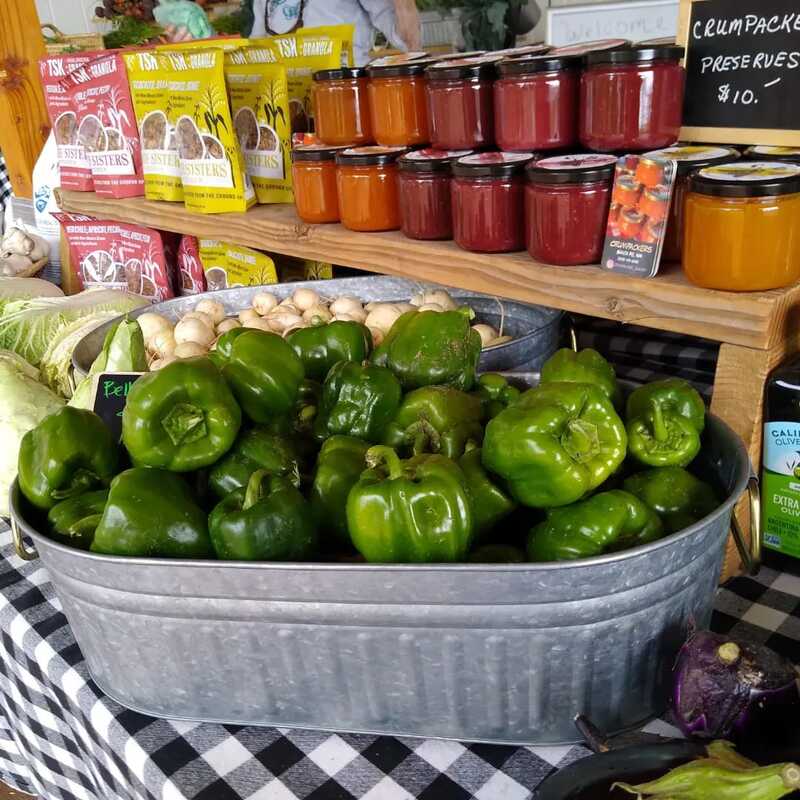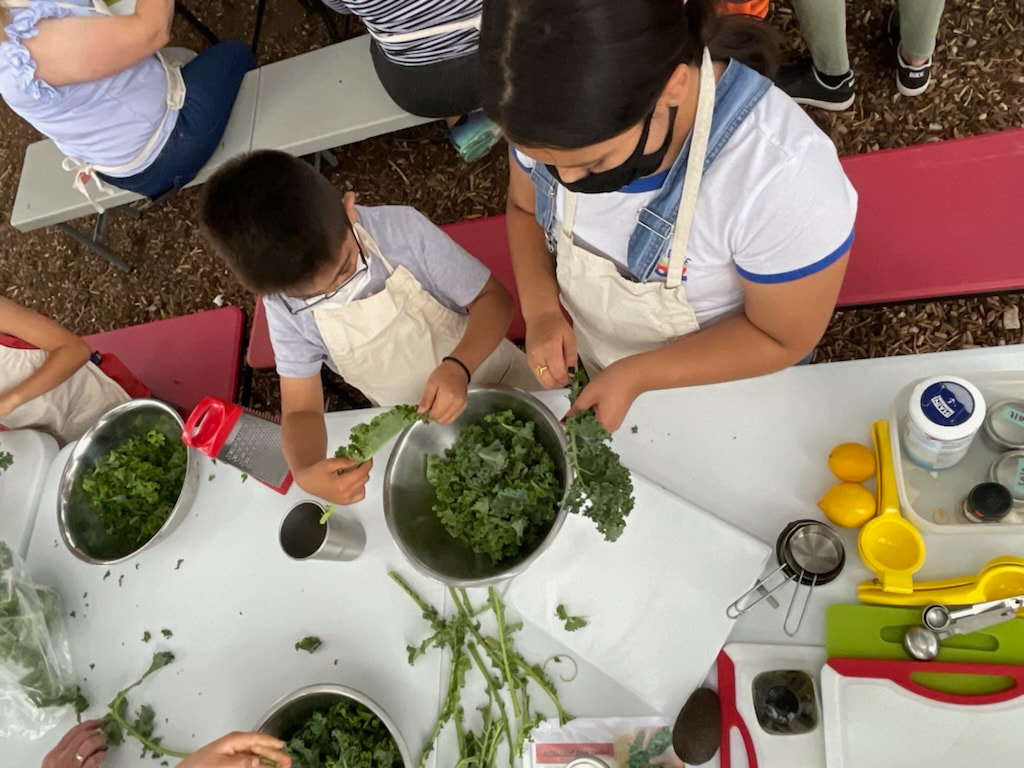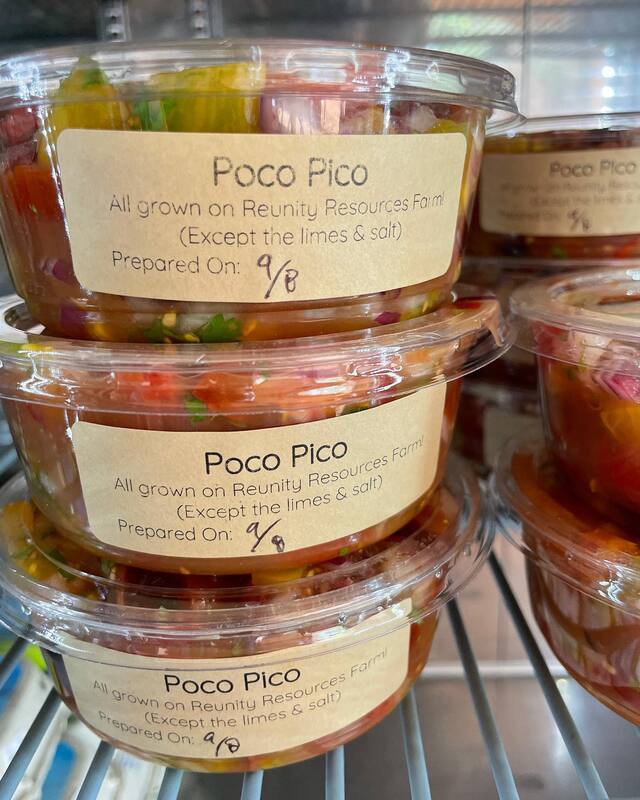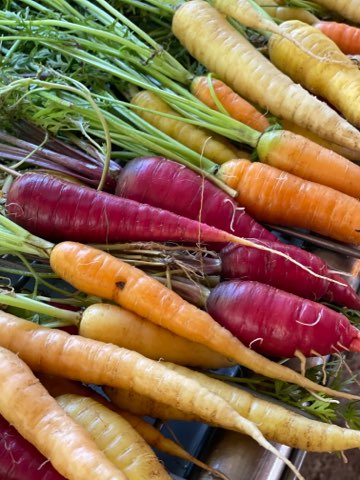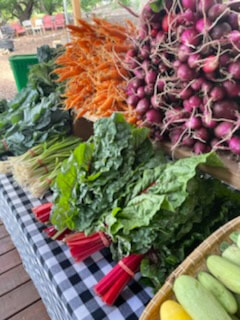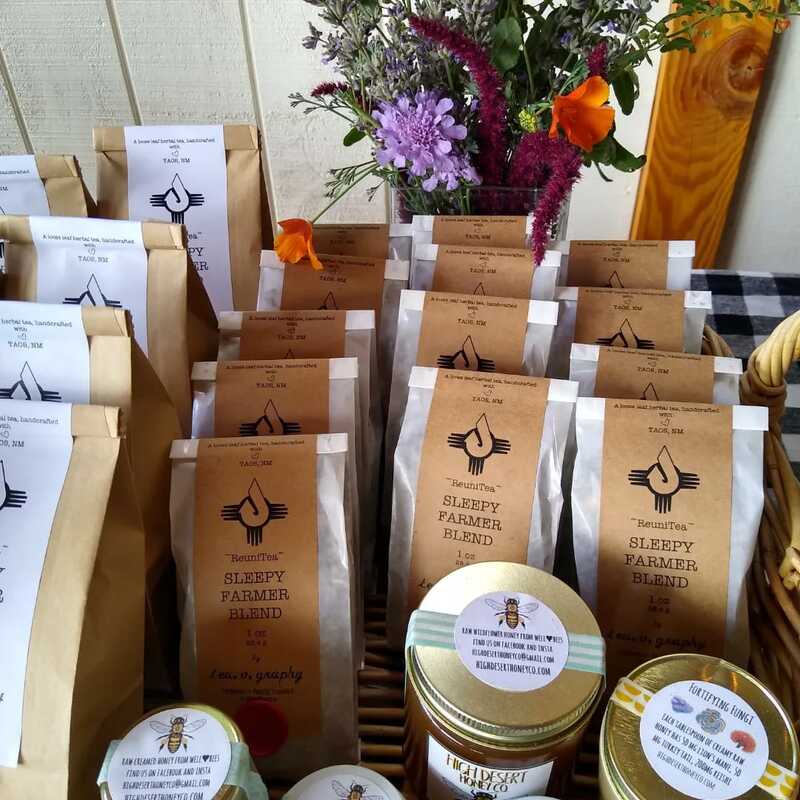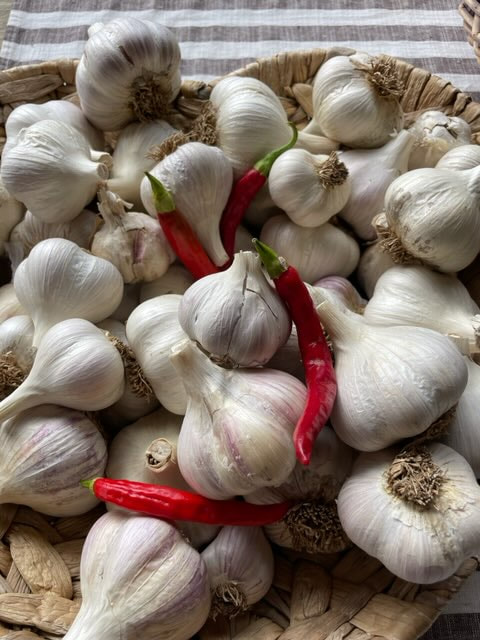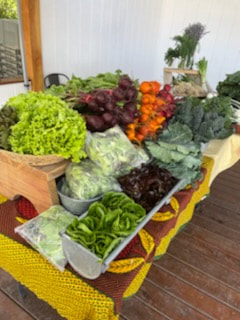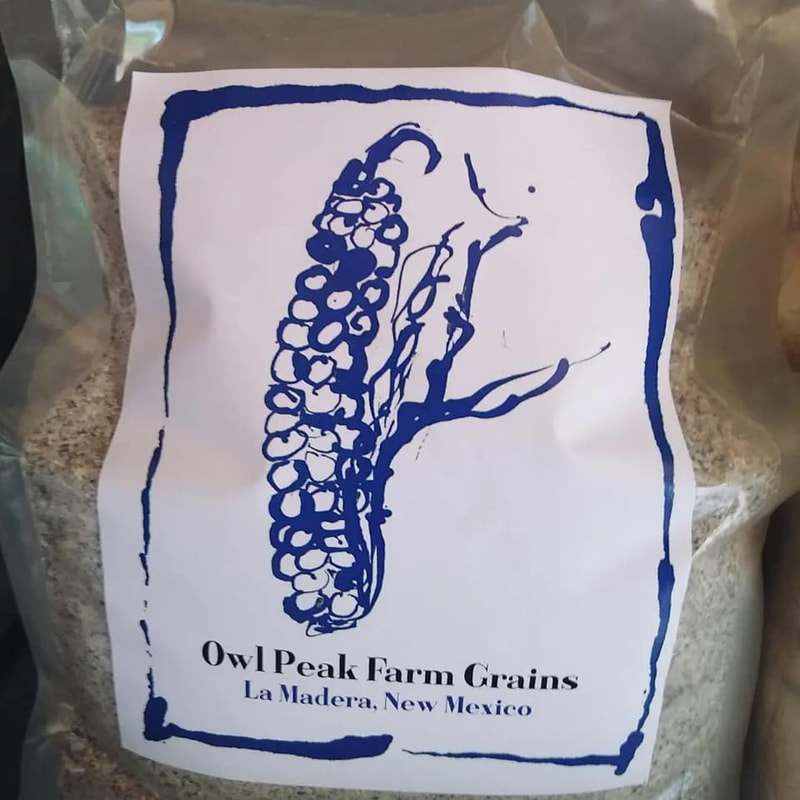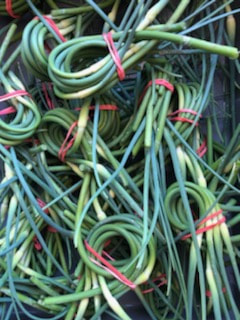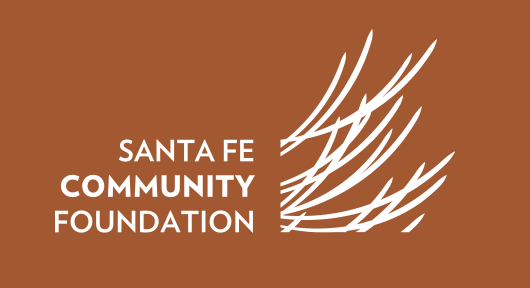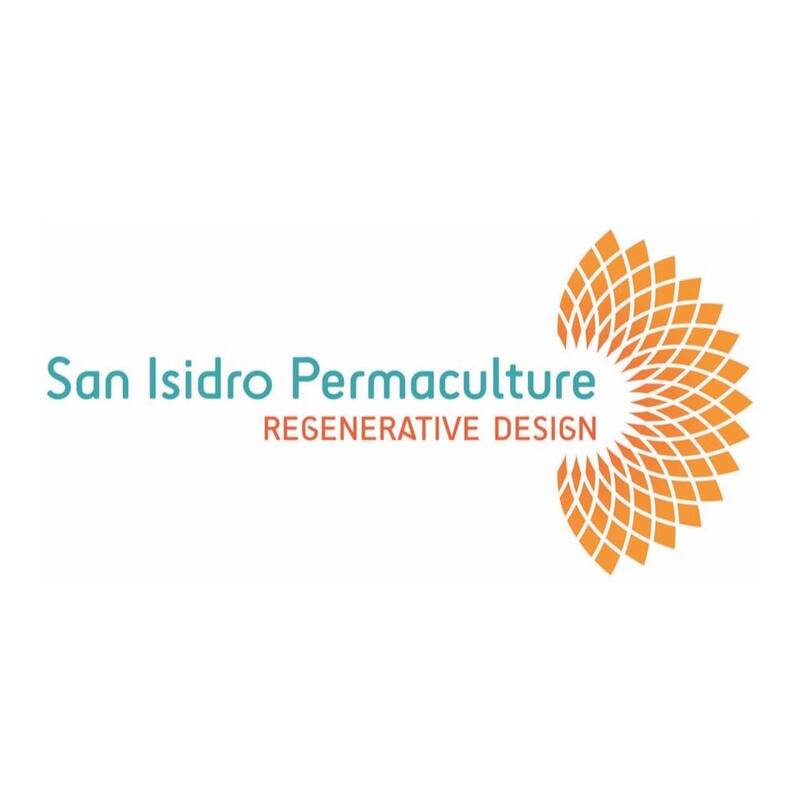Farm Stand Hours
|
June - September: Summer Farm Stand
Fridays: 3pm-5pm Saturdays: 9am-1pm Sundays: 9am-1pm October: Fall Farm Stand Saturdays: 9am-1pm Sundays: 9am-1pm Located at Reunity Farm Map: 1829 San Ysidro Xing, Santa Fe, NM, 87507 The Reunity Farm Stand sells fresh, Reunity Farm produce, over 100+ New Mexico made local products, and Farm Fresh Kitchen dips, dressings, salads, soups, ferments picklings and more (prepared by our own Saving Seconds Team in our on-site kitchen)!
Our farm stand accepts Double Up Food Bucks, WIC, Senior FMNP, and FreshRX food access programs! |
Farm Cards for Sale
The Reunity Resources Farm Card is a prepaid gift card good for one farm season that can be used to purchase Reunity produce, seedlings, and other products in the farm stand such as local honey, dry goods, eggs, meats, dairy and prepared foods. You decide how much money to put on your card and what to spend it on: consider it an incredibly flexible CSA.
The Farm Card is a physical reusable card. When you purchase online, your credit card will be charged for the selected amount, and we will load the Farm Card with an additional 10% added value! For instance, if you buy a $100 Farm Card, we will put $110 on the card, a $200 card will be loaded with $220, etc.
Farm Cards are available for pick-up at Reunity Resources during open Farm Stand hours. Simply tell the cashier you have a Farm Card to pick up and your name, and they will pull it for you from our file.
Your farm card purchase sustains the farm by directly supporting our spring operating costs. Thank you! We look forward to feeding you more fresh flavors this season.
The Reunity Resources Farm Card is a prepaid gift card good for one farm season that can be used to purchase Reunity produce, seedlings, and other products in the farm stand such as local honey, dry goods, eggs, meats, dairy and prepared foods. You decide how much money to put on your card and what to spend it on: consider it an incredibly flexible CSA.
The Farm Card is a physical reusable card. When you purchase online, your credit card will be charged for the selected amount, and we will load the Farm Card with an additional 10% added value! For instance, if you buy a $100 Farm Card, we will put $110 on the card, a $200 card will be loaded with $220, etc.
Farm Cards are available for pick-up at Reunity Resources during open Farm Stand hours. Simply tell the cashier you have a Farm Card to pick up and your name, and they will pull it for you from our file.
Your farm card purchase sustains the farm by directly supporting our spring operating costs. Thank you! We look forward to feeding you more fresh flavors this season.
Farm Card Donation Campaign
A big part of our mission at Reunity Resources is to provide equitable access to healthy, local food. Economic inequities and food insecurity are as present as ever, and donating Farm Cards is one way we work to fulfill our food access mission.
We work with multiple partner agencies including SFPS Adelante, the Santa Fe Indigenous Center, Gerard's House, Many Mothers and the Birthing Tree Collective to provide families with fresh food. Stepping into the fourth year of our farm card donation program, we know based on participant feedback that it is an excellent way to connect families to farm fresh food and the accompanying resources we offer such as Double Up Food Bucks, the Community Fridge, bilingual cooking classes/nutrition education, Farm Camp and scholarship program, and the farm’s family-friendly setting.
Your mutual aid food support means direct access to fresh, healthy food for families in our community. It allows families to get WHAT they want, WHEN they want it. And it’s grown right in the neighborhood, promoting healthy families and a healthy food system. Join us in donating $100 Farm Cards to one hundred families by making your contribution below. Select the Farm Fresh Food Donations campaign in the menu.
A big part of our mission at Reunity Resources is to provide equitable access to healthy, local food. Economic inequities and food insecurity are as present as ever, and donating Farm Cards is one way we work to fulfill our food access mission.
We work with multiple partner agencies including SFPS Adelante, the Santa Fe Indigenous Center, Gerard's House, Many Mothers and the Birthing Tree Collective to provide families with fresh food. Stepping into the fourth year of our farm card donation program, we know based on participant feedback that it is an excellent way to connect families to farm fresh food and the accompanying resources we offer such as Double Up Food Bucks, the Community Fridge, bilingual cooking classes/nutrition education, Farm Camp and scholarship program, and the farm’s family-friendly setting.
Your mutual aid food support means direct access to fresh, healthy food for families in our community. It allows families to get WHAT they want, WHEN they want it. And it’s grown right in the neighborhood, promoting healthy families and a healthy food system. Join us in donating $100 Farm Cards to one hundred families by making your contribution below. Select the Farm Fresh Food Donations campaign in the menu.
Why Do Farm Stands Matter?
Fresh Food Access
Fresh food access in our neighborhood is critical. We are located in a USDA Food Access Research Atlas identified low-income, low-access area. Providing not only fresh food, but a welcoming environment and community activities from concerts to workshops to bilingual cooking classes builds relationships both with one another and with our food, leading to community resilience on multiple levels. Feeding America's 2019 Map the Meal Gap shows that NM ranks last in the nation for childhood food security. NM-IBIS says only 18% of children in Santa Fe County eat 5+ servings of fruits/veg every day. Heart disease, diabetes, and obesity have a major economic impact, with diabetes alone costing $1.8 billion/year, as reported by New Mexico's Indicator-Based Information System (NM-IBIS).
To get more food into peoples' homes for the dollar, our farm stand accepts Double Up Food Bucks, WIC, Senior FMNP, and FreshRX food access programs. We also donated $10,000 in Farm Cards to families served by our partner organizations SFPS Adelante, Santa Fe Indigenous Center, Santa Fe Refugee Collaborative and Many Mothers in 2022. While we also donate over 10,000 pounds of food through our community fridge and pantry and bulk donations to partner agencies' regular food distributions, government food access programs and the donated Farm Cards allow our community members the dignity to choose what they want, when they want it, in the Farm Stand.
Community Climate Change Resiliency
The saying “No farmers, no food” is an apt observation for our times. One generation ago, 1 in 4 Americans worked the land; today, fewer than 1 in 100 people do. In Time magazine, March 28, 2018 issue, Joseph Hincks stated “By 2050, with the global population expected to reach 9.8 billion, our food supplies will be under far greater stress. Demand [for food] will be 60% higher than it is today, but climate change, urbanization, and soil degradation will have shrunk the availability of arable land, according to the World Economic Forum. Add water shortages, pollution, and worsening inequality into the mix and the implications are stark.” Stresses on our food system and economy in New Mexico have already resulted in a current rate of 17% of households not knowing where their next meal is coming from. In New Mexico, 97% of the actual food (by volume, weight) is estimated to be imports from outside the State, harming both our food security and our state economy.
Farmer Economics
The USDA says the average annual gross income of a small-scale farmer is less than $10,000/yr and half of farmers lose money every year. The Farmers Market Coalition reports that 25% of vendors rely on a farmers' market as their sole source of income. This has an impact on farmers’ lives and the struggling economy of NM. In 2018, 24/7 Wall Street compared economic vitality among states, placing NM near the bottom. The economic situation of our state is not just a difficulty felt by those who produce our food. One in four consumers in NM live at/below the poverty line. They face challenges due to low incomes, lack of access to healthy food, or not knowing about the access they do have.
Local Food Systems
Reunity Resources’ overarching Farm Stand goal is to strengthen capacity and regional food system development through community collaboration, infrastructure sharing and expansion of mid-tier value chains. To this end, we partner with numerous small farmers, allowing them the simplicity and predictability of bulk sales to us for retail in the Farm Stand. Many farmers simply want to farm, so knowing that marketing and sales are handled supports them to do more of what they do best. We also share infrastructure including a propagation house, walk-in coolers, wash station and the certified kitchen that allows farmers to process bumper crops or 'seconds' quality vegetables into shelf-stable products that can both provide further economic value to the farmers and keep more local foods in our food system year round.
Fresh Food Access
Fresh food access in our neighborhood is critical. We are located in a USDA Food Access Research Atlas identified low-income, low-access area. Providing not only fresh food, but a welcoming environment and community activities from concerts to workshops to bilingual cooking classes builds relationships both with one another and with our food, leading to community resilience on multiple levels. Feeding America's 2019 Map the Meal Gap shows that NM ranks last in the nation for childhood food security. NM-IBIS says only 18% of children in Santa Fe County eat 5+ servings of fruits/veg every day. Heart disease, diabetes, and obesity have a major economic impact, with diabetes alone costing $1.8 billion/year, as reported by New Mexico's Indicator-Based Information System (NM-IBIS).
To get more food into peoples' homes for the dollar, our farm stand accepts Double Up Food Bucks, WIC, Senior FMNP, and FreshRX food access programs. We also donated $10,000 in Farm Cards to families served by our partner organizations SFPS Adelante, Santa Fe Indigenous Center, Santa Fe Refugee Collaborative and Many Mothers in 2022. While we also donate over 10,000 pounds of food through our community fridge and pantry and bulk donations to partner agencies' regular food distributions, government food access programs and the donated Farm Cards allow our community members the dignity to choose what they want, when they want it, in the Farm Stand.
Community Climate Change Resiliency
The saying “No farmers, no food” is an apt observation for our times. One generation ago, 1 in 4 Americans worked the land; today, fewer than 1 in 100 people do. In Time magazine, March 28, 2018 issue, Joseph Hincks stated “By 2050, with the global population expected to reach 9.8 billion, our food supplies will be under far greater stress. Demand [for food] will be 60% higher than it is today, but climate change, urbanization, and soil degradation will have shrunk the availability of arable land, according to the World Economic Forum. Add water shortages, pollution, and worsening inequality into the mix and the implications are stark.” Stresses on our food system and economy in New Mexico have already resulted in a current rate of 17% of households not knowing where their next meal is coming from. In New Mexico, 97% of the actual food (by volume, weight) is estimated to be imports from outside the State, harming both our food security and our state economy.
Farmer Economics
The USDA says the average annual gross income of a small-scale farmer is less than $10,000/yr and half of farmers lose money every year. The Farmers Market Coalition reports that 25% of vendors rely on a farmers' market as their sole source of income. This has an impact on farmers’ lives and the struggling economy of NM. In 2018, 24/7 Wall Street compared economic vitality among states, placing NM near the bottom. The economic situation of our state is not just a difficulty felt by those who produce our food. One in four consumers in NM live at/below the poverty line. They face challenges due to low incomes, lack of access to healthy food, or not knowing about the access they do have.
Local Food Systems
Reunity Resources’ overarching Farm Stand goal is to strengthen capacity and regional food system development through community collaboration, infrastructure sharing and expansion of mid-tier value chains. To this end, we partner with numerous small farmers, allowing them the simplicity and predictability of bulk sales to us for retail in the Farm Stand. Many farmers simply want to farm, so knowing that marketing and sales are handled supports them to do more of what they do best. We also share infrastructure including a propagation house, walk-in coolers, wash station and the certified kitchen that allows farmers to process bumper crops or 'seconds' quality vegetables into shelf-stable products that can both provide further economic value to the farmers and keep more local foods in our food system year round.




